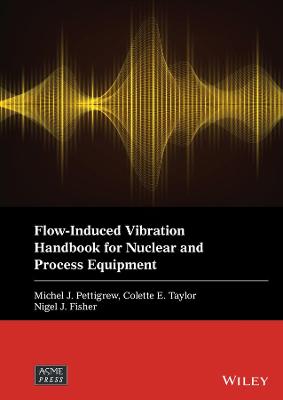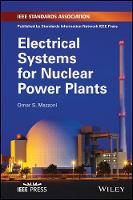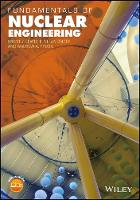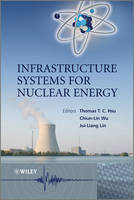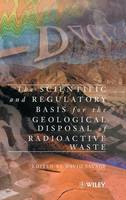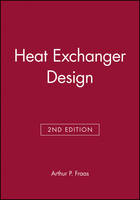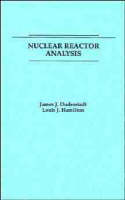Chemical Reactor Design and Operation
 -15%
portes grátis
-15%
portes grátis
Chemical Reactor Design and Operation
Westerterp, K. Roel; Beenackers, A. A. C. M.; Van Swaaij, W. P. M.
John Wiley & Sons Inc
10/1987
800
Mole
Inglês
9780471917304
15 a 20 dias
1110
Preface to the Second Edition
Preface to the Student Edition
List of Symbols
Chapter I Fundamentals of chemical reactor calculations
1.1 Introduction
1.2 The material, energy and economic balance
?Material balance
?Energy balance
?Economic balance
1.3 Thermodynamic data: heat of reaction and chemical equilibrium
?Heat of reaction
?Chemical equilibrium
1.4 Conversion rate, chemical reaction rate and chemical reaction rate equations
?Influence of temperature on kinetics
?Influence of concentration on kinetics
1.5 The degree of conversion
?Relation between conversion and concentration expressions
1.6 Selectivity and yield
?Selectivity and yield in a reactor section with recycle of non-converted reactant
1.7 Classification of chemical reactors
References
Chapter II Model reactors: single reactions, isothermal single phase reactor calculations
II.1 The well-mixed batch reactor
II.2 The continuously operated ideal tubular reactor
II.3 The continuously operated ideal tank reactor
11.4 The cascade of tank reactors
II.5 The semi-continuous tank reactor
II.6 The recycle reactor
II.7 A comparison between the different model reactors
?Batch versus continuous operation
?Tubular reactor versus tank reactor
II.8 Some examples of the influence of reactor design and operation on the economics of the process
?The use of one of the reactants in excess
?Recirculation of unconverted reactant
?Maximum production rate and optimum load with intermittent operation
References
Chapter III Model reactors: multiple reactions, isothermal single phase reactors
III.1 Fundamental concepts
?Differential selectivity and selectivity ratio
?The reaction path
III.2 Parallel reactions
?Parallel reactions with equal order rate equations
?Parallel reactions with differing reaction order rate equations
?A cascade of tank reactors
III.3 The continuous cross flow reactor system
III.4 Consecutive reactions
?First order consecutive reactions in a plug flow reactor
?First order consecutive reactions in a tank reactor
?General discussion
III.5 Combination reactions
?Graphical methods
?Optimum yield in a cascade of tank reactors
?Algebraic methods
III.6 Autocatalytic reactions
?Single biochemical reactions
?Multiple autocatalytic reactions
References
Chapter IV Residence time distribution and mixing in continuous flow reactors
IV.1 The residence time distribution (RTD)
?The E and the F diagram
?The application of the RTD in practice
IV.2 Experimental determination of the residence time distribution
?Input functions
IV.3 Residence time distribution in a continuous plug flow and in a continuous ideally stirred tank reactor.
IV.4 Models for intermediate mixing
?Model of a cascade of N equal ideally mixed tanks
?The axially dispersed plug flow model
IV.5 Conversion in reactors with intermediate mixing
IV.6 Some data on the longitudinal dispersion in continuous flow systems
?Flow through empty tubes
?Packed beds
?Fluidized beds
?Mixing in gas-liquid reactors
References
Chapter V Influence of micromixing on chemical reactions
V.1 Nature of the micromixing phenomena
?Macro or gross overall mixing as characterized by the residence time distribution
?The state of aggregation of the reacting fluid
?The earliness of the mixing
V.2 Boundaries to micromixing phenomena
?The model tubular and tank reactors
?Boundaries for micromixing for reactors with arbitrary RTDs
V.3 Intermediate degree of micromixing in continuous stirred tank reactors
?Formal models
?Agglomeration models
?Model for micromixing via exchange of mass between agglomerates and their ?average? environment, the IEM model
V.4 Experimental results on micromixing in stirred vessels
V.5 Concluding remarks on micromixing
References
Chapter VI The role of the heat effect in model reactors
VI.1 The energy balance and heat of reaction
VI.2 The well-mixed batch reactor
?Batch versus semi-batch operation
VI.3 The tubular reactor with external heat exchange
?Maximum temperature with exothermic reactions; para-metric sensitivity
VI.4 The continuous tank reactor with heat exchange
VI.5 Autothermal reactor operation
?The tank reactor
? An adiabatic tubular reactor with heat exchange between reactants and products
?A multi-tube reactor with internal heat exchange between the reaction mixture and the feed
?Determination of safe operating conditions
VI.6 Maximum permissible reaction temperatures
VI.7 The dynamic behaviour of model reactors
?The autothermal tank reactor
?Tubular reactor
References
Chapter VII Multiphase reactors, single reactions
VII.1 The role of mass transfer
VII.2 A qualitative discussion on mass transfer with homogeneous reaction
?Concentration distribution in the reaction phase
VII.3 General material balance for mass transfer with reaction
VII.4 Mass transfer without reaction
?Stagnant film model
?Penetration models of Higbie and Danckwerts
VII.5 Mass transfer with homogeneous irreversible first order reaction
?Penetration models
?Stagnant film model
?General conclusion on mass transfer with homogeneous irreversible first order reaction
?Applications
VII.6 Mass transfer with homogeneous irreversible reaction of complex kinetics
VII.7 Mass transfer with homogeneous irreversible reaction of order (1.1) with Al >> 1
?Slow reaction
?Fast reaction
?Instantaneous reaction
?General approximated solution
VII.8 Mass transfer with irreversible homogeneous reaction of arbitrary kinetics with Al >>1
VII.9 Mass transfer with irreversible reaction of order (1, 1) for a small Hinterland coefficient
VII.10 Mass transfer with reversible homogeneous reactions
VII.11 Reaction in a fluid-fluid system with simultaneous mass transfer to the non-reaction phase (desorption)
VII.12 The influence of mass transfer on heterogeneous reactions
?Heterogeneous reaction at an external surface
?Reactions in porous solids
VII.13 General criterion for absence of mass transport limitation
VII.14 Heat effects in mass transfer with reaction
?Mass transfer with reaction in series
?Mass transfer with simultaneous reaction in a gas-liquid system
?Mass transfer with simultaneous reaction in a porous pellet
VII.15 Model reactors for studying mass transfer with chemical reaction in heterogeneous systems
?Model reactors for gas-liquid reactions
?Model reactors for liquid-liquid reactions
?Model reactors for fluid-solid reactions.
VII.16 Measurement techniques for mass transfer coefficients and specific contact areas in multi-phase reactors
?Measurement of the specific contact area a
?Measurement of the product kLa
?Measurement of the product kGa
?Measurement of mass transfer coefficients kL, kG
VII.17 Numerical values of mass transfer coefficients and specific contact areas in multi-phase reactors
?Fluid-solid reactors
?Fluid-fluid (-solid) reactors
References
Chapter VIII Multi-phase reactors, multiple reactions
VIII.1 Introduction
VIII.2 Simultaneous mass transfer of two reactants A and A? with independent parallel reactions A ? P and A? ? X (Type I Selectivity)
?Mass transfer and reaction in series
?Mass transfer and reaction in parallel
VIII.3 Mass transfer of one reactant (A) followed by two dependent parallel reactions
A(+B) ? P A(+B,B?) ? X
(Type II Selectivity)
?Mass transfer and reaction in series
?Mass transfer and reaction in parallel
VIII.4 Simultaneous mass transfer of two reactants (A and A?) followed by dependent parallel reactions with a third reactant: A + B ? P, A? + B ? X
?Complete mass transfer limitation in non-reaction phase
?One reactant mass transfer limited in non-reaction phase
?One reaction instantaneous
?Both reactions instantaneous
?No diffusion limitation of reactant originally present in reaction phase
?More complex systems
VIII.5 Simultaneous mass transfer of two reactants (A and A?) which react with each other
VIII.6 Mass transfer with consecutive reactions A ? P ? X (Type III Selectivity)
?Mass transfer and reaction in series
?Mass transfer and reaction in parallel
VIII.7 Mass transfer with mixed consecutive parallel reactions
?The system: A(1) ? A(2); A(2) + B(2) ? P(2); P(2) + B(2) ?X(2)
?The system: A(1) ? A(2); A(2) + B(2) ? P(2); A(2) + P(2) ?X(2)
?Complex systems
References
Chapter IX Heat effects in multi-phase reactors
IX.1 Gas-liquid reactors
?General
?Column reactors
?Bubble column reactors
?Agitated gas-liquid reactors
IX.2 Gas-solid reactors
?Single particle behaviour
?Catalytic gas-solid reactors
?The moving bed gas-solid reactor
?Thermal stability and dynamic behaviour of gas solid reactors
IX.3 Gas-liquid-solid reactors
References
Chapter X The optimization of chemical reactors
X.1 The object and means of optimization
?The objective function
?The optimization variables
?Relation between technical and economic optima
X.2 Optimization by means of temperature
?The optimization of exothermic equilibrium reactions
?Temperature optimization with complex reaction systems
X.3 Some mathematical methods of optimization
?Geometric programming
?The Lagrange multiplier technique
?Numerical search routines
?Dynamic programming
Pontryagin?s maximum principle
References
Author index
Subject Index
Preface to the Second Edition
Preface to the Student Edition
List of Symbols
Chapter I Fundamentals of chemical reactor calculations
1.1 Introduction
1.2 The material, energy and economic balance
?Material balance
?Energy balance
?Economic balance
1.3 Thermodynamic data: heat of reaction and chemical equilibrium
?Heat of reaction
?Chemical equilibrium
1.4 Conversion rate, chemical reaction rate and chemical reaction rate equations
?Influence of temperature on kinetics
?Influence of concentration on kinetics
1.5 The degree of conversion
?Relation between conversion and concentration expressions
1.6 Selectivity and yield
?Selectivity and yield in a reactor section with recycle of non-converted reactant
1.7 Classification of chemical reactors
References
Chapter II Model reactors: single reactions, isothermal single phase reactor calculations
II.1 The well-mixed batch reactor
II.2 The continuously operated ideal tubular reactor
II.3 The continuously operated ideal tank reactor
11.4 The cascade of tank reactors
II.5 The semi-continuous tank reactor
II.6 The recycle reactor
II.7 A comparison between the different model reactors
?Batch versus continuous operation
?Tubular reactor versus tank reactor
II.8 Some examples of the influence of reactor design and operation on the economics of the process
?The use of one of the reactants in excess
?Recirculation of unconverted reactant
?Maximum production rate and optimum load with intermittent operation
References
Chapter III Model reactors: multiple reactions, isothermal single phase reactors
III.1 Fundamental concepts
?Differential selectivity and selectivity ratio
?The reaction path
III.2 Parallel reactions
?Parallel reactions with equal order rate equations
?Parallel reactions with differing reaction order rate equations
?A cascade of tank reactors
III.3 The continuous cross flow reactor system
III.4 Consecutive reactions
?First order consecutive reactions in a plug flow reactor
?First order consecutive reactions in a tank reactor
?General discussion
III.5 Combination reactions
?Graphical methods
?Optimum yield in a cascade of tank reactors
?Algebraic methods
III.6 Autocatalytic reactions
?Single biochemical reactions
?Multiple autocatalytic reactions
References
Chapter IV Residence time distribution and mixing in continuous flow reactors
IV.1 The residence time distribution (RTD)
?The E and the F diagram
?The application of the RTD in practice
IV.2 Experimental determination of the residence time distribution
?Input functions
IV.3 Residence time distribution in a continuous plug flow and in a continuous ideally stirred tank reactor.
IV.4 Models for intermediate mixing
?Model of a cascade of N equal ideally mixed tanks
?The axially dispersed plug flow model
IV.5 Conversion in reactors with intermediate mixing
IV.6 Some data on the longitudinal dispersion in continuous flow systems
?Flow through empty tubes
?Packed beds
?Fluidized beds
?Mixing in gas-liquid reactors
References
Chapter V Influence of micromixing on chemical reactions
V.1 Nature of the micromixing phenomena
?Macro or gross overall mixing as characterized by the residence time distribution
?The state of aggregation of the reacting fluid
?The earliness of the mixing
V.2 Boundaries to micromixing phenomena
?The model tubular and tank reactors
?Boundaries for micromixing for reactors with arbitrary RTDs
V.3 Intermediate degree of micromixing in continuous stirred tank reactors
?Formal models
?Agglomeration models
?Model for micromixing via exchange of mass between agglomerates and their ?average? environment, the IEM model
V.4 Experimental results on micromixing in stirred vessels
V.5 Concluding remarks on micromixing
References
Chapter VI The role of the heat effect in model reactors
VI.1 The energy balance and heat of reaction
VI.2 The well-mixed batch reactor
?Batch versus semi-batch operation
VI.3 The tubular reactor with external heat exchange
?Maximum temperature with exothermic reactions; para-metric sensitivity
VI.4 The continuous tank reactor with heat exchange
VI.5 Autothermal reactor operation
?The tank reactor
? An adiabatic tubular reactor with heat exchange between reactants and products
?A multi-tube reactor with internal heat exchange between the reaction mixture and the feed
?Determination of safe operating conditions
VI.6 Maximum permissible reaction temperatures
VI.7 The dynamic behaviour of model reactors
?The autothermal tank reactor
?Tubular reactor
References
Chapter VII Multiphase reactors, single reactions
VII.1 The role of mass transfer
VII.2 A qualitative discussion on mass transfer with homogeneous reaction
?Concentration distribution in the reaction phase
VII.3 General material balance for mass transfer with reaction
VII.4 Mass transfer without reaction
?Stagnant film model
?Penetration models of Higbie and Danckwerts
VII.5 Mass transfer with homogeneous irreversible first order reaction
?Penetration models
?Stagnant film model
?General conclusion on mass transfer with homogeneous irreversible first order reaction
?Applications
VII.6 Mass transfer with homogeneous irreversible reaction of complex kinetics
VII.7 Mass transfer with homogeneous irreversible reaction of order (1.1) with Al >> 1
?Slow reaction
?Fast reaction
?Instantaneous reaction
?General approximated solution
VII.8 Mass transfer with irreversible homogeneous reaction of arbitrary kinetics with Al >>1
VII.9 Mass transfer with irreversible reaction of order (1, 1) for a small Hinterland coefficient
VII.10 Mass transfer with reversible homogeneous reactions
VII.11 Reaction in a fluid-fluid system with simultaneous mass transfer to the non-reaction phase (desorption)
VII.12 The influence of mass transfer on heterogeneous reactions
?Heterogeneous reaction at an external surface
?Reactions in porous solids
VII.13 General criterion for absence of mass transport limitation
VII.14 Heat effects in mass transfer with reaction
?Mass transfer with reaction in series
?Mass transfer with simultaneous reaction in a gas-liquid system
?Mass transfer with simultaneous reaction in a porous pellet
VII.15 Model reactors for studying mass transfer with chemical reaction in heterogeneous systems
?Model reactors for gas-liquid reactions
?Model reactors for liquid-liquid reactions
?Model reactors for fluid-solid reactions.
VII.16 Measurement techniques for mass transfer coefficients and specific contact areas in multi-phase reactors
?Measurement of the specific contact area a
?Measurement of the product kLa
?Measurement of the product kGa
?Measurement of mass transfer coefficients kL, kG
VII.17 Numerical values of mass transfer coefficients and specific contact areas in multi-phase reactors
?Fluid-solid reactors
?Fluid-fluid (-solid) reactors
References
Chapter VIII Multi-phase reactors, multiple reactions
VIII.1 Introduction
VIII.2 Simultaneous mass transfer of two reactants A and A? with independent parallel reactions A ? P and A? ? X (Type I Selectivity)
?Mass transfer and reaction in series
?Mass transfer and reaction in parallel
VIII.3 Mass transfer of one reactant (A) followed by two dependent parallel reactions
A(+B) ? P A(+B,B?) ? X
(Type II Selectivity)
?Mass transfer and reaction in series
?Mass transfer and reaction in parallel
VIII.4 Simultaneous mass transfer of two reactants (A and A?) followed by dependent parallel reactions with a third reactant: A + B ? P, A? + B ? X
?Complete mass transfer limitation in non-reaction phase
?One reactant mass transfer limited in non-reaction phase
?One reaction instantaneous
?Both reactions instantaneous
?No diffusion limitation of reactant originally present in reaction phase
?More complex systems
VIII.5 Simultaneous mass transfer of two reactants (A and A?) which react with each other
VIII.6 Mass transfer with consecutive reactions A ? P ? X (Type III Selectivity)
?Mass transfer and reaction in series
?Mass transfer and reaction in parallel
VIII.7 Mass transfer with mixed consecutive parallel reactions
?The system: A(1) ? A(2); A(2) + B(2) ? P(2); P(2) + B(2) ?X(2)
?The system: A(1) ? A(2); A(2) + B(2) ? P(2); A(2) + P(2) ?X(2)
?Complex systems
References
Chapter IX Heat effects in multi-phase reactors
IX.1 Gas-liquid reactors
?General
?Column reactors
?Bubble column reactors
?Agitated gas-liquid reactors
IX.2 Gas-solid reactors
?Single particle behaviour
?Catalytic gas-solid reactors
?The moving bed gas-solid reactor
?Thermal stability and dynamic behaviour of gas solid reactors
IX.3 Gas-liquid-solid reactors
References
Chapter X The optimization of chemical reactors
X.1 The object and means of optimization
?The objective function
?The optimization variables
?Relation between technical and economic optima
X.2 Optimization by means of temperature
?The optimization of exothermic equilibrium reactions
?Temperature optimization with complex reaction systems
X.3 Some mathematical methods of optimization
?Geometric programming
?The Lagrange multiplier technique
?Numerical search routines
?Dynamic programming
Pontryagin?s maximum principle
References
Author index
Subject Index

